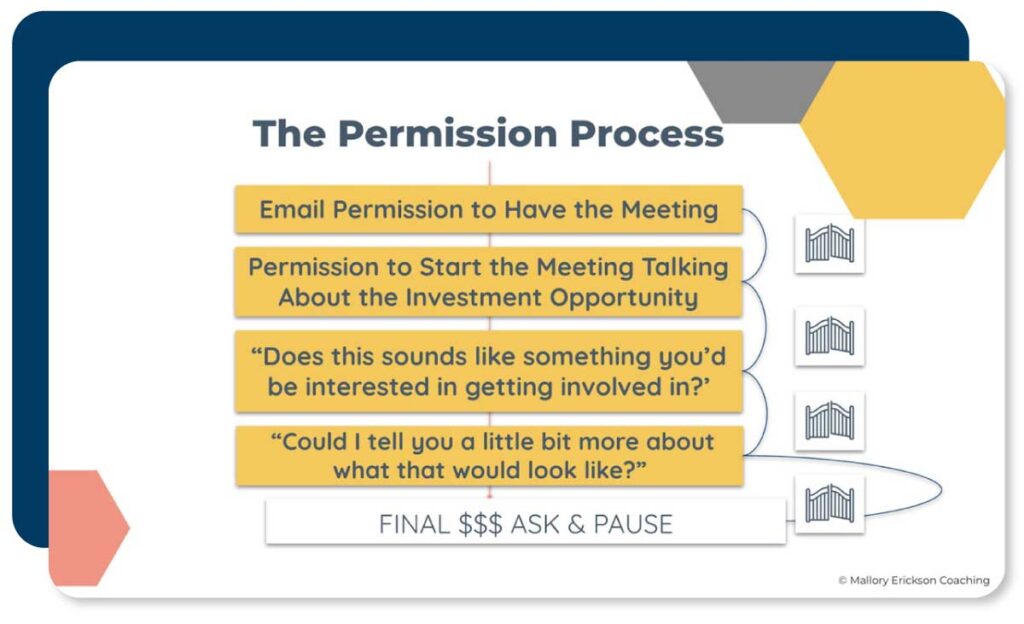(And How to Feel Good Doing It)
Contributed by Mallory Erickson, nonprofit speaker, author, podcast host, and creator of Practivated, the practice space for fundraisers
Let’s get real, asking for donations can feel like one of the most stressful parts of fundraising. You’re not just inviting someone to invest. You’re putting yourself, your mission, and your vulnerability on the line. And if that’s been weighing on you lately, you’re not alone.
But here’s the thing that most fundraising training skips: the way we feel about asking for donations directly influences the way we show up and the outcomes we get.
So what if I told you that asking for donations doesn’t have to feel like a trapdoor opening beneath you? That it could feel aligned, empowering, and even joyful?
A lot of times, fundraisers want an “ask script,” but it actually isn’t a perfect meeting script that is going to get you a “yes.” Instead, we want to rewire your relationship with asking for donations altogether, so that you can build the connected relationship that leads to an aligned investment.
Why does asking for donations feel so hard?
Too often, fundraisers carry internal scripts rooted in fear:
- “They’ve already done so much—I can’t ask again.”
- “Now isn’t the right time.”
- “What if they say no?”
We rationalize avoidance with what sound like strategic reasons. But behind those thoughts is usually something more tender: fear of rejection, of being too much, or of jeopardizing a relationship we value.
And that fear? It doesn’t just live in your head. It lives in your body.
When our stress response is activated (hello, amygdala!), we lose access to the parts of our brain responsible for connection, curiosity, and empathy. In that state, we can’t build the relationships that fundraising depends on.
The good news? We can shift this. When you build in practices of preparation, nervous system regulation, and strategic permission-seeking, you reduce the internal noise. You make space to show up with intention and clarity.
Learn how to put these practices into action with Mallory Erickson’s Donor Connection Guide. This free resource shifts your perspective from mere engagement to genuine connection, offering insights and practical steps for lasting donor relationships.

You have more influence than you realize
Here’s one of the most important truths I teach: donor behavior is a response behavior. The dollars you raise are a lagging indicator—the leading indicator is your behavior.
I don’t say this to add more pressure, but to help us realize that if asking for donations isn’t going the way we want it to, we can actually do something about it. But we need to shift our attention to how we’re showing up. How are we building trust? Are we creating clarity? Are we making the next step easy?
Inspired by BJ Fogg’s Behavior Model, we understand that a donor action happens when three things come together in a single moment:
- Motivation – They care about the cause
- Ability – It’s easy for them to say yes
- Prompting – You actually invite them to take an action
As we’re building out relationships with donors, we’re learning about what motivates them and where their ability lies, and then we invite them in alignment with these factors. But what does it take to uncover motivation, build trust, and get you to the point where you can make a meaningful and aligned ask?
The most underrated fundraising skill: Curiosity
In order to ensure that you’re motivating a donor in the right way, you need to understand them. What keeps them up at night? How are they aligned with your organization? Why have they been involved recently (or not)? Has anything changed on their end since they first got involved? What matters to them most? Has that changed over time?
Too often, we assume we know our donors because we knew them five years ago. But people evolve, and your relationships should, too. Even though I am giving examples of questions we should be asking our donors, I want to make clear that we can’t just go on generic listening tours and keep asking the same five questions over and over again. We need to be genuinely curious to get to know our donors and deepen our connection with them.
If we’re uncomfortable in meetings, it gets in the way of our genuine curiosity and ability to ask the right questions. This is where Practivated can come in because you can practice asking questions that invite vulnerability and depth. When we gather real insight from donors, we’re able to identify true alignment, and that is what leads to transformational giving.
Get permission, for their sake and yours
For a long time, I thought that fundraising was asking people to do something they didn’t really want to do. I thought I had to find a way to convince people of this and almost trick them or corner them in a moment where they just couldn’t say no. Over the years, I realized that there was one thing that always led to a yes, and it was asking for permission.
Getting permission to make the ask (before and during the meeting) regulates you and helps the donor feel safe and prepared. Permission is a form of transparency, and it creates alignment and builds trust.
When we aren’t transparent about why we want to have a donor meeting, we walk into the meeting constantly thinking about when and how we’re going to squeeze it in. But if we’re clear in our email —”I’d love to talk with you about how you might want to get more involved with X program this year.”—we remove uncertainty for both us and the donor. That creates more trust and buy-in, and the whole meeting is less stressful for us because we walk into the meeting knowing that everyone knows the purpose of the conversation and what we’re going to talk about.
Even when we get permission to talk about investment prior to setting up the meeting, I still recommend that we ask for permission again in the meeting itself.

Preparation and practice
There is a fine line between preparing for a donor meeting and overpreparing. In the latter, you’re driven by fear and the desire to control a situation that is inherently filled with uncertainty (because it involves two humans in a dynamic interaction). Yes, we want to prepare for the meeting, and even the feeling of control can decrease our stress response. So, if you need some support creating briefing sheets that allow you to walk into donor meetings more prepared, you can download my briefing sheet from inside the Power Partners Formula here.
But even with the best briefing sheet in the world, you’re still walking into the unknown. What will the donor ask? How will you respond to questions about XYZ? What if you don’t know the answer? So your nervous system is understandably activated. This is why I am such an advocate for practice.
Practice isn’t about saying perfect words (because those don’t exist), it’s about building muscle memory in our bodies to feel calm and grounded when it matters most.
That’s why we created Practivated, a donor conversation simulator designed to help you rehearse the process of asking for donations in a real-world context. When you practice before a meeting, you’re not just memorizing lines; you’re building confidence.
While Practivated is available independently, DonorPerfect is the first official nonprofit CRM partner. What makes this partnership powerful is how the tool combines AI-powered coaching with your real fundraising context.
DonorPerfect users receive preferred pricing and can leverage real donor data, making practice sessions more personalized and relevant.
Learn more >>

Practivated supports fundraisers with over 500 tailored scenarios based on donor type, persona, and fundraising goal. Tivy, your in-platform coach, offers real-time messaging tips, strategic guidance, and actionable feedback to help you refine your approach. Instead of walking into donor conversations with uncertainty, you show up calm, grounded, and ready.
You wouldn’t expect Simone Biles to skip practice and nail her routine. So why are we expecting ourselves to just walk into high-stakes conversations and nail it without having gone through it ahead of time?
Here’s what I want you to remember as you head into year-end fundraising:
Asking for donations is about offering people a chance to do something meaningful, something aligned with their values. Fundraising is an offer, not an ask. It is about partnership and opportunity, and inviting people to be a part of the impactful work you do. Your work is sacred, and when it feels good to you, it feels better to them.
Ready to deepen your practice? Join me and DonorPerfect in our Lapsed Donor Re-Engagement Challenge and start creating connection-driven conversations that convert!
Get your free
Donor Connection Guide
Written by Mallory Erickson in partnership with DonorPerfect






